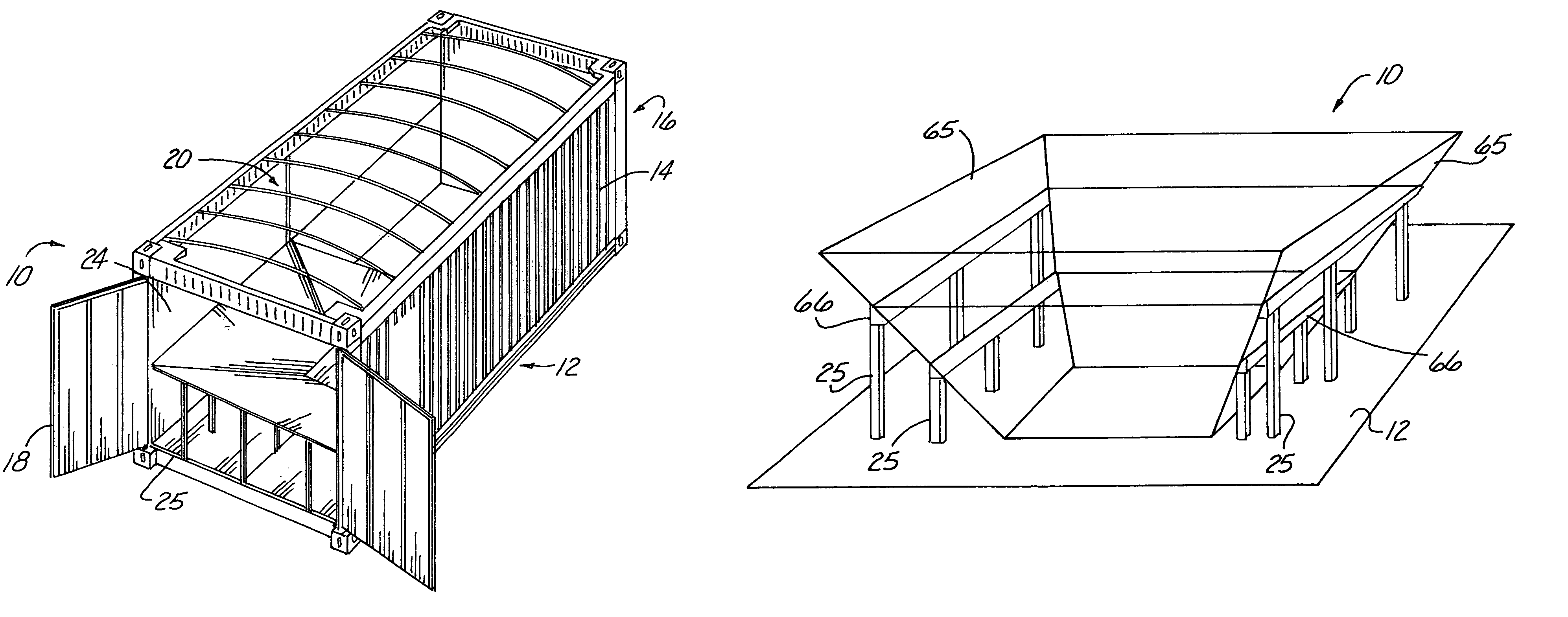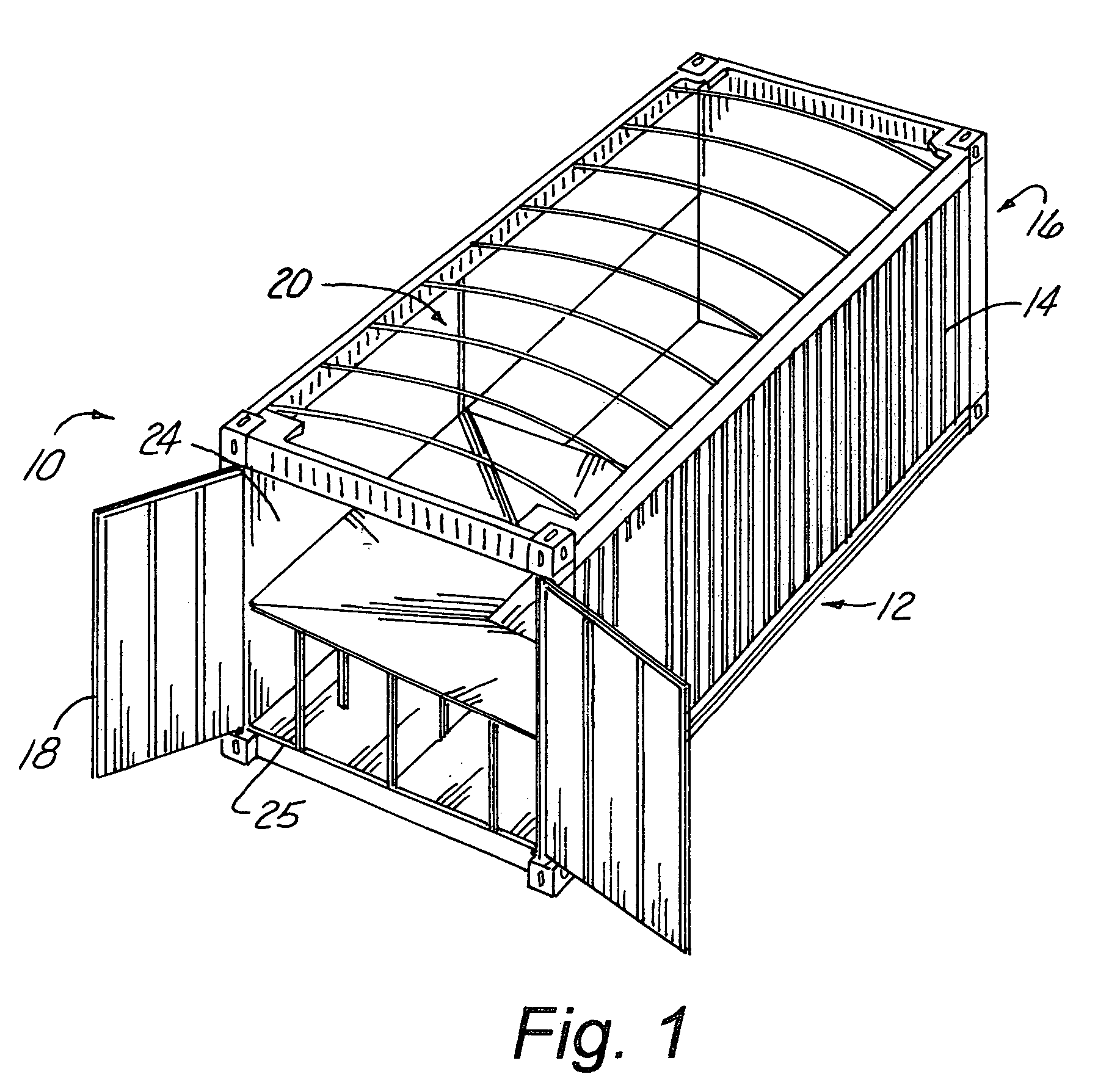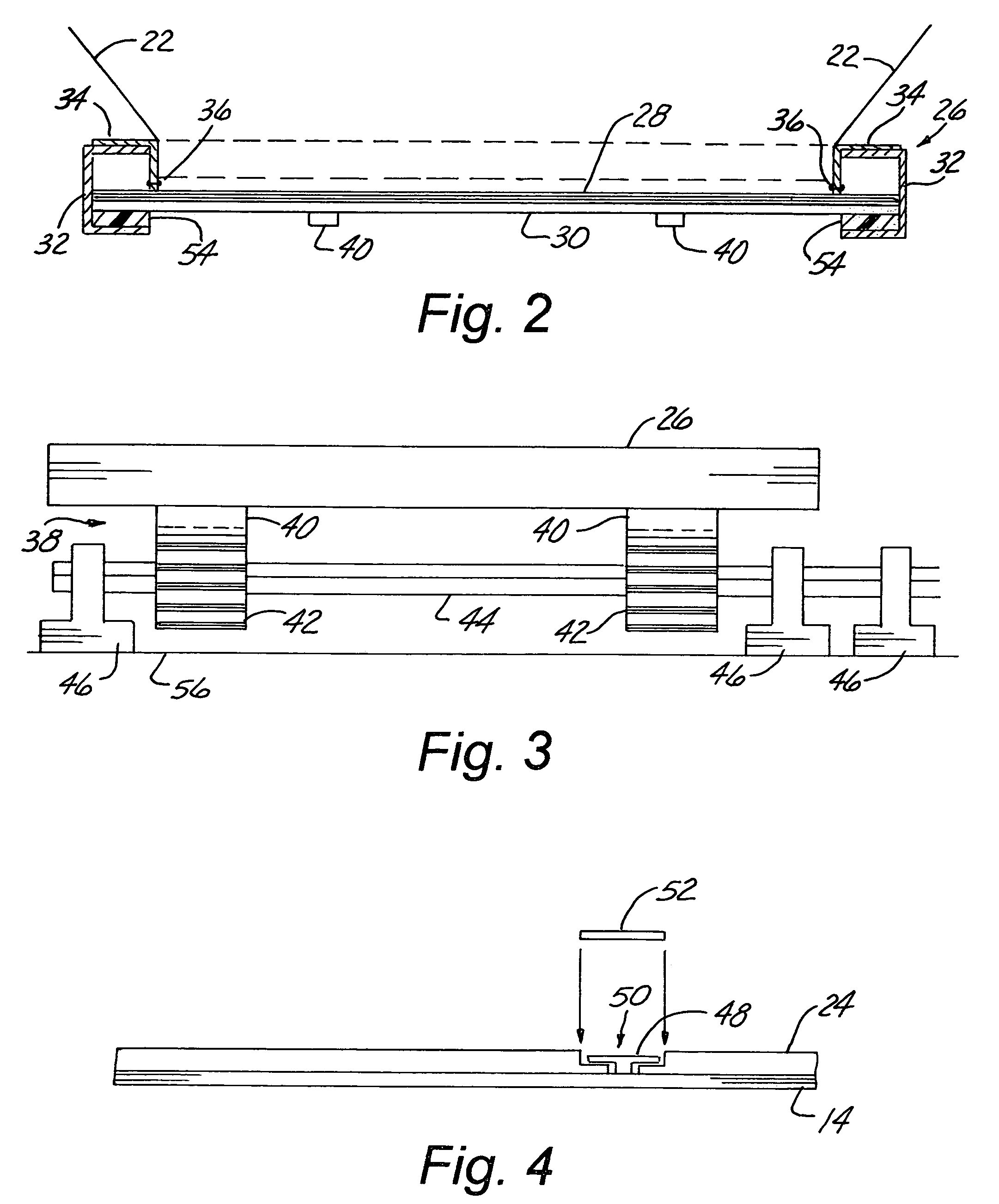Identity preserved container
a container and identity technology, applied in the field of identity preservation containers, can solve the problems of limiting the use of crops, unable to accommodate ip grains, and unable to move ip completely,
- Summary
- Abstract
- Description
- Claims
- Application Information
AI Technical Summary
Benefits of technology
Problems solved by technology
Method used
Image
Examples
Embodiment Construction
[0020]In the Figures, FIG. 1 shows an IP container 10 that consists of a modified standardized intermodal container. The dimensions and construction of standard containers are well known in the art. In the preferred embodiment of the invention the container is 6058 mm×2500 mm×2591 mm (length×width×height) in external dimension, and 5880 mm×2420 mm×2387.5 mm in internal dimensions. This inner cubic capacity is 34 m3. Of course, these dimensions can and will vary depending on the application. In the preferred embodiment of the invention the IP container 10 is manufactured from an existing container, however, those of ordinary skill in the art will understand that the invention is not so limited. In particular, the IP container 10 could be specifically manufactured in a manner that would eliminate the need for modification.
[0021]The IP container 10 includes a bottom 12, side walls 14, back wall 16, doors 18, and a top 20. In the preferred embodiment of the invention the doors 18 are we...
PUM
 Login to View More
Login to View More Abstract
Description
Claims
Application Information
 Login to View More
Login to View More - R&D
- Intellectual Property
- Life Sciences
- Materials
- Tech Scout
- Unparalleled Data Quality
- Higher Quality Content
- 60% Fewer Hallucinations
Browse by: Latest US Patents, China's latest patents, Technical Efficacy Thesaurus, Application Domain, Technology Topic, Popular Technical Reports.
© 2025 PatSnap. All rights reserved.Legal|Privacy policy|Modern Slavery Act Transparency Statement|Sitemap|About US| Contact US: help@patsnap.com



